
Station Name: SPORLE[Source: Glen Kilday]
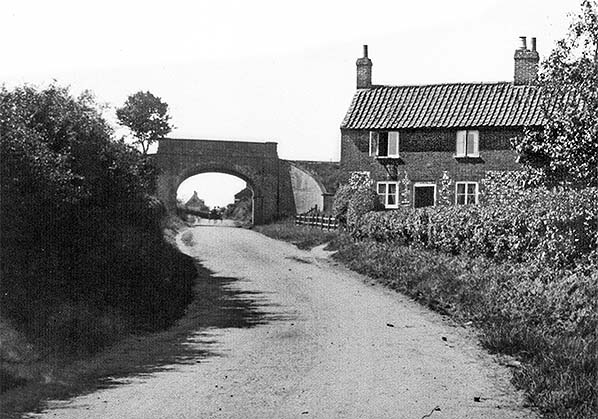 The long-lost railway bridge over the The Street at Sporle, looking north. The station was to the left along a path beside the house, also now lost. The date is likely to be the early 1900s, more than fifty years after the station closed.
Photo: Sporle and Palgrave History Group: Swaffham Museum Collection  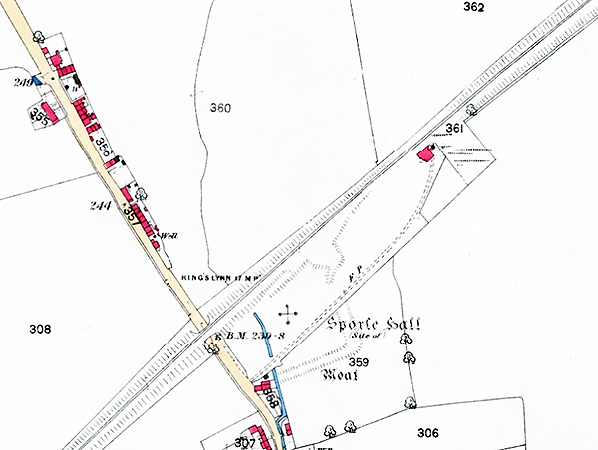
1883 1:2,500 OS Map. The former station building was in place accessed from the Palgrave Road by a footpath.
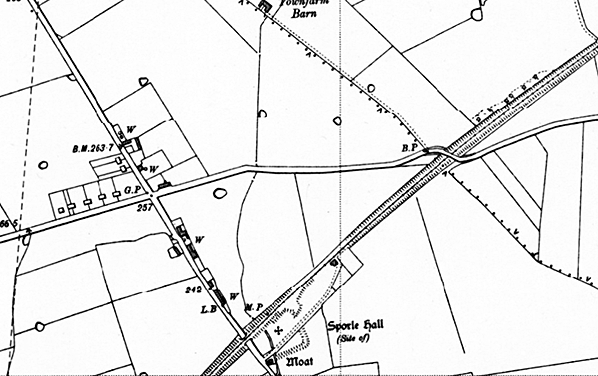
1950 1:10,560 OS Map. It is clear that very little, insofar as mapping was concerned, had changed in the 100 years after closure of the station. The short-lived station building remained in place.
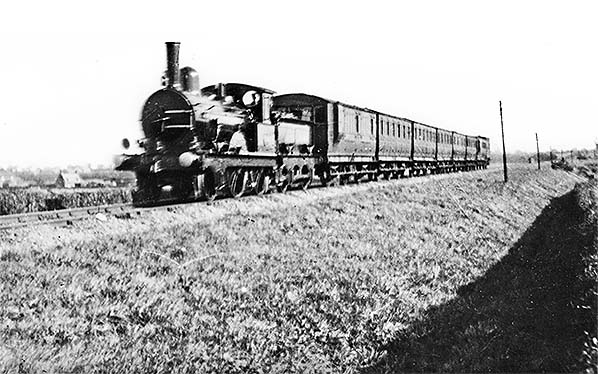 A Swaffham to Dereham train, date unknown, near the site of Sporle’s short-lived station. The small village can be seen in the background. The seven coach train is hauled by one of S.W. Johnson’s No. 1 Class 2-4-0s. The forty strong class were built by Sharpe, Stewart & Company and at the GER’s own Stratford Works between 1867 and 1872. All were scrapped by 1913: curiously the last to go was the prototype locomotive, No. 1.
Photo source is credited to ‘Pegg’ and the image was provided by the Sporle and Palgrave History Group 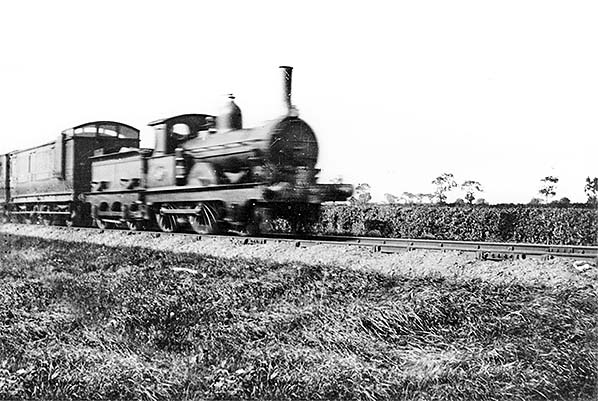
A Dereham to Swaffham train seen close to the site of Sporle station; the date is not known. The locomotive is probably one of the variants of Johnson’s No.1 Class 2-4-0s although the boiler and steam-dome are different from the other image above. A GER ‘Birdcage’ brake-van is at the front of the consist.
Photo from Sporle and Palgrave History Group 4.jpg) Looking east towards the site of Sporle station in July 1982 from The Street railway bridge. Looking east towards the site of Sporle station in July 1982 from The Street railway bridge.Photo by John Mann 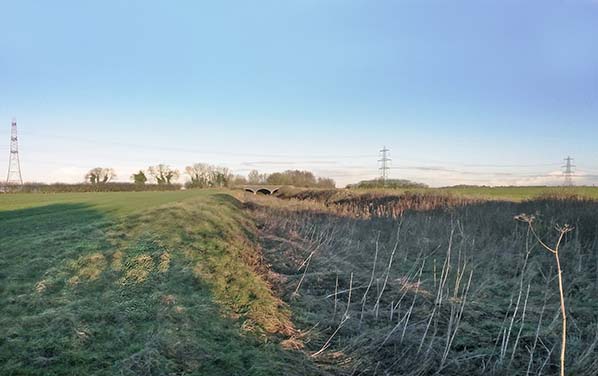
Looking north-east from the site of Sporle station towards the surviving Dunham Road bridge
in January 2017. Photo from Norfolk by Rail Facebook Group 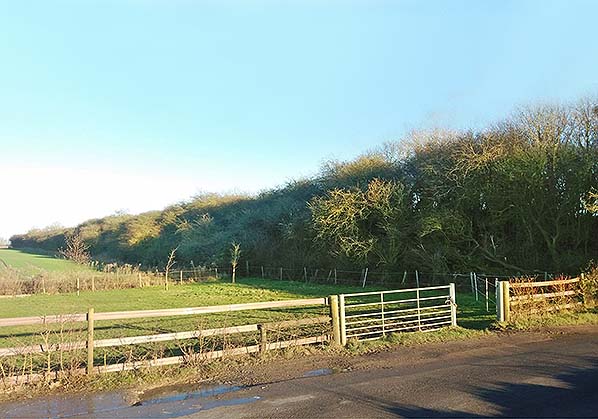
Looking north-east along the embankment from The Street in January 2017.
Photo from Norfolk by Rail Facebook Group 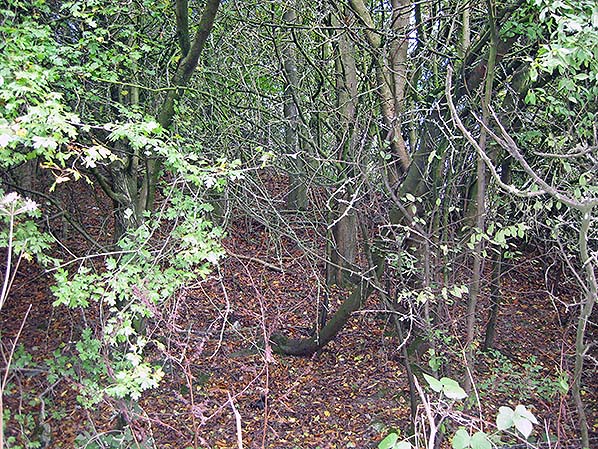
The railway crossed the lane that leads from Sporle to Palgrave on an overbridge. Looking north-east from the lane towards where the station stood the cut-away embankment can just be discerned in October 2017: the bridge and supports have long gone.
Photo by Glen Kilday 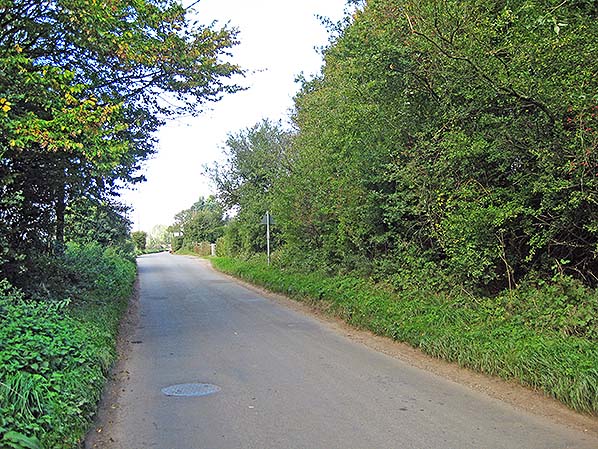 The railway crossed the lane that leads from Sporle to Palgrave on an overbridge at this spot although there is almost no trace that it did so in October 2017. The station site was about 150 yards to the right
Photo by Glen Kilday 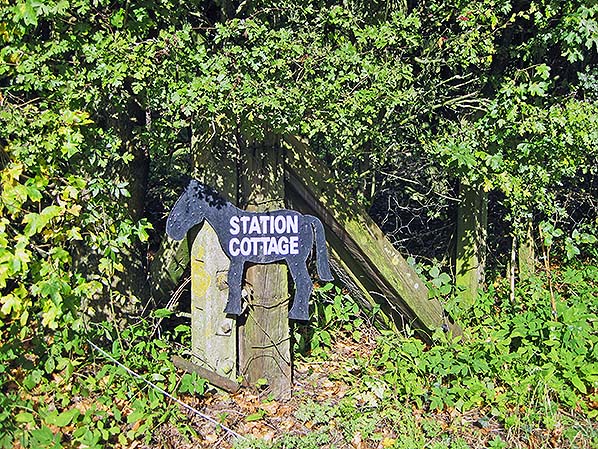
Beside the lane from Sporle to Palgrave at the entrance to the station site is the only obvious indicator that there was a railway here. Station Cottage does not refer to the long-demolished station itself but to 1990s home.
Photo by Glen Kilday
|


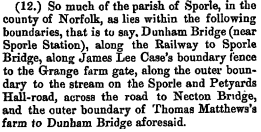 The exact closure date cannot be found, although various sources state that it was in 1850. There is a reference to Sporle Station in the London Gazette 5.12.1882 even though the station had been closed for over 30 years. A Norfolk Trade Directory, published in 1854, describes Sporle and Palgrave as one parish, the former a village, the latter a hamlet, a mile and a half distant one from the other. There were 847 inhabitants of 176 houses, with Baptist and Primitive Methodist Chapels and a Parish Church at Sporle. It stated that The Lynn and Dereham Railway intersects the parish, passing the site where Sporle Hall formerly stood….. Importantly there was, in 1854, no mention of a station. The station was certainly still open in March 1850 when it was shown in Bradshaw. Indeed, it boasted a good service. All three weekday up and down down trains stopped and two in each direction, labelled as Government Trains, called on Sundays. All of the trains ran the full distance between Lynn and Dereham.
The exact closure date cannot be found, although various sources state that it was in 1850. There is a reference to Sporle Station in the London Gazette 5.12.1882 even though the station had been closed for over 30 years. A Norfolk Trade Directory, published in 1854, describes Sporle and Palgrave as one parish, the former a village, the latter a hamlet, a mile and a half distant one from the other. There were 847 inhabitants of 176 houses, with Baptist and Primitive Methodist Chapels and a Parish Church at Sporle. It stated that The Lynn and Dereham Railway intersects the parish, passing the site where Sporle Hall formerly stood….. Importantly there was, in 1854, no mention of a station. The station was certainly still open in March 1850 when it was shown in Bradshaw. Indeed, it boasted a good service. All three weekday up and down down trains stopped and two in each direction, labelled as Government Trains, called on Sundays. All of the trains ran the full distance between Lynn and Dereham. 
 Home Page
Home Page